Cordon and Search operations in Palestine were often conducted at battalion and even brigade level. An area was identified and then ‘cordoned’ off, surrounded by manned outposts designed to cover all movement in and out of the objective. Troops entered the area to be searched and screened all the male inhabitants by asking questions, any suspects were detained. Methodical searches then took place with engineer support to look for weapons, equipment and documents of intelligence value.
After a number of Hagana or Palmach - Jewish insurgent groups - sabotage incidents, it was decided to mount a cordon and search on two Jewish settlements in the Negev Desert 10 miles east of Gaza. These searches at Dorot and Ruhama beginning on 28th August 1946 were called operations BREAM and EEL and carried out respectively by 8 and 3 PARA assisted by 9 Airborne Squadron Royal Engineers.
The two colonies, supporting populations of 235 and 170 were known to be centres of illegal training and were thought to contain arms caches. The subsequent operation was typical of hundreds of similar cordon and searches conducted throughout the Palestine emergency by units belonging to the 6th Airborne Division between 1945-8.
Troops arrived under cover of darkness and established cordons around both settlements for six days. All male inhabitants were screened by the police. This revealed a number of strangers who claimed they were ‘to assist with the harvest’. Resistance was not generally offered and in these cases curfews raised, except by night, to enable settlers to conduct their normal business as the search operation progressed.
Engineers and soldiers began orthodox searches using mine detectors and prodders, examining likely buildings that might contain hiding places. As much ingenuity and imagination was required to locate arms caches as conceal them. Work progressed with meagre results despite finds of spent cartridges lying about a practice rifle range at Ruhama. As a consequence 10 ‘metal-detecting’ dogs were introduced. These scented the ground and were trained to sit upon potential finds where they were rewarded with meat.
At Dorot concrete slabs were removed with a compressor drill on the floor of a hen house when the dog’s relaxed repose was followed-up by sceptical engineers. An arms cache was discovered beneath four and a half feet of earth housing 50 assorted weapons including mortars and machine guns and many thousands of rounds of ammunition. In Ruhama the dogs located a circular steel drum hidden under a gravel pile and five feet of earth. It contained weapons parts, magazines, mines, explosives and military equipment.
Larger brigade-size operations such as Operation MACKERAL a search and cordon of the Yemenite Quarter of Rehovoth by 3rd Parachute Brigade and supporting arms was conducted on 2nd January 1947. One arms cache was located and three shrapnel road mines and 19 Jews detained from the 1,280 screened. The following day 1st Parachute Brigade screened 3,985 persons in Sht Ha Tiqva and Sht Ezra during Operation CAUTIOUS, netting 34 suspects. The work could be dangerous, five members of 4 PARA and three from 5 PARA were wounded in two separate mine strikes the same day.
Cordon and Search operations had a noticeable effect upon the level of terrorist activity during the Palestine Mandate troubles.
Cordon and Search
Newsletter Signup
Donate
Donate
Make a donation to Airborne Assault ParaData to help preserve the history of The Parachute Regiment and Airborne Forces
The Airborne Shop
The Airborne Shop
The Airborne Shop is the official shop of Support Our Paras (The Parachute Regiment Charity RCN1131977).
Profits from all sales made through our shop go directly to Support Our Paras, so every purchase you make with us will directly benefit The Parachute Regiment and Airborne Forces.

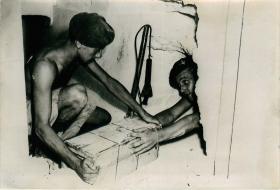
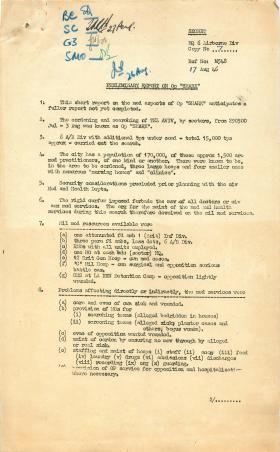
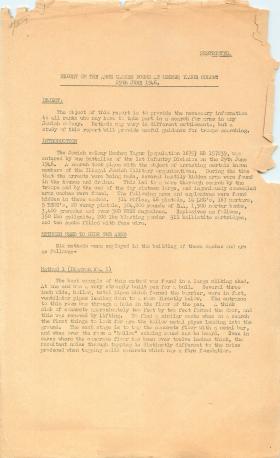
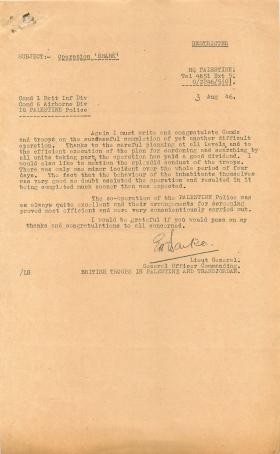
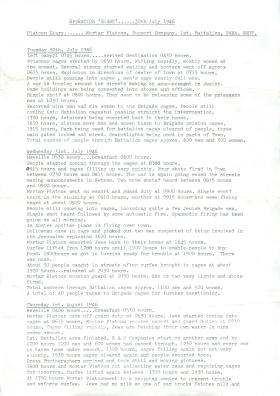
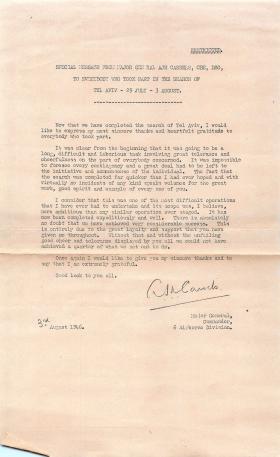
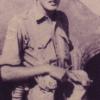



Latest Comments
There are currently no comments for this content.
Add Comment
In order to add comments you must be registered with ParaData.
If you are currently a ParaData member please login.
If you are not currently a ParaData member but wish to get involved please register.